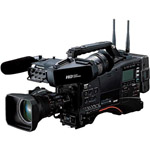Journalism and Mass Communications, College of

College of Journalism and Mass Communications: Professional Projects
Date of this Version
Spring 5-16-2014
Document Type
Project
Abstract
The project explored and analyzed the use of the social media tool Twitter in the immediate aftermath of a major event. Tweets and re-tweets from the first hour following the Boston Marathon Bombings on April 15, 2013 were collected and analyzed. The project used the application SIFTER from the company Textifer to identify the related tweets by inputting sixteen previously documented keywords related to the Boston Marathon Bombing. The tweets were then divided into several categories and subcategories to be analyzed. The company Twitter Counter was used to obtain accurate information, such as followers on, for various individual Twitter accounts. The findings showed that the majority of the tweets after the Boston Marathon Bombing were emotional reactions from Twitter users. Tweets that contained information were shared more often than tweets that were reactions or inquiries. The project showed that Twitter users were more likely to share information from the media than a witness or the average citizen. The project also showed that local media utilized several different Twitter accounts to broadcast breaking news by sending identical tweets simultaneously from each account. Users that followed specific media accounts were more likely to have shared tweets from accounts that appeared to be more related to breaking news, even when the accounts sent identical tweets at the exact same time.
Advisor: Frauke Hachtmann
Included in
Communication Technology and New Media Commons, Mass Communication Commons, Social Media Commons


Comments
A project Presented to the Faculty of The Graduate College of the University of Nebraska In Partial Fulfillment of Requirements For the Degree of Master of Arts, Major: Advertising, Under the Supervision of Professor Frauke Hachtmann. Lincoln, Nebraska: May, 2014
Copyright (c) 2014 Rebekah D. Giordano